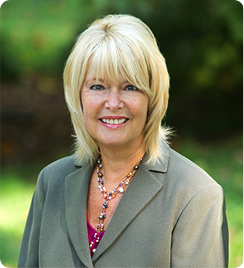
Think of times when your work fit like a glove. Those times may have come in minutes, hours, or months. It was a time when you were in flow, feeling confident and competent. Now think about specific jobs where you awoke excited to arrive at work. Those times when you were intrigued by the possibilities waiting for you. Those times when you contributed to creating something special, be it a product or a service. And your colleagues became like family as you supported and cheered each other’s efforts.
On the other hand, there were those other jobs when the fit was not so comfortable. We’ve all had them. Something is off. You are not doing your best. Your spirit is absent. You don’t feel like you are making a contribution. What led to these contrasting experiences?
Personality or temperament is often something we pay little attention to as we age. Our personalities seem fixed with little wiggle room. We may believe that we grow out of those various patterns we displayed as youngsters. Maybe we were called shy or a class clown or we loved to be in charge or we stayed in the background.
Back then people might have recommended we become different: be more of this or less of that. “Vivian is a smart girl, but she doesn’t speak up in class”. “Jack is too talkative and can’t sit still. He needs to calm down”. We weren’t accepted unconditionally for our personalities. We were instructed to change in order to become successful in life and work. What happened to those traits that we displayed early on? Do you still have them or are they covered over by a new facade?
Quiet, The Power of Introverts in a World that Can’t Stop Talking by Susan Cain is currently receiving a great deal of buzz. According to Cain, one third to one half of people are introverts. But the American work world is especially constructed for extroverts and reveres them. So if you are an introvert, you may feel a lack of fit or success with your career.
Even obtaining a job can be difficult for an introvert. For example, often employment interviews are held with a group of applicants being questioned together. Or there may be a panel of interviewers with one applicant.
Introverts prefer one on one or small groups of people they know. They tend not to speak up forcefully or promote themselves. The danger in a group interview is that an introvert will hang back and become lost in the process. In panel interviews they might become overstimulated and distracted by several interviewers and lack space to contemplate their responses.
Another trend in work environments is turning private offices into large open work spaces. Employees are encouraged to work in teams and bounce ideas off one another in a sometimes noisy free for all. But introverts prefer quiet and time alone to recharge and deliberate their solutions. An open office environment can squash their creative process.
Reviewing your work history, how well did your jobs fit your temperament? Could it be that an uncomfortable employment situation was highly impacted by a working environment that clashed with your style? Do you think you ever blew a job interview because you were unable to truly share who you are?
According to Cain, “Our lives are shaped as profoundly by personality as by gender or race”. So being aware if you are an extrovert or an introvert is the first step to making good choices for yourself. If you aren’t sure where you fall, you can take assessments like the Myers Briggs or free tests online.
Where you are on the extrovert/introvert continuum has nothing to do with your intelligence or capability. It is only a way of operating in the world. Since an extrovert temperament is admired and rewarded, introverts may feel “less than” and try to become someone they are not.
An occasional stretch outside your comfort zone in order to accomplish goals is different from behaving as a fraud. Not being true to your authentic self is exhausting and ultimately harmful to your existence. Accepting who you are and placing yourself in situations that promote your strengths ensure a life well lived.
So what is a person to do?:
Determine where you fall on the introvert/extrovert continuum
Identify the strengths that come with your temperament
Decide which environments nurture you
Find ways to spend sufficient time in those environments
Ask if your current work fits you well enough so that you can be productive
Choose where you want to stretch and make changes as needed to get a better fit
Be yourself and see you on the path!











